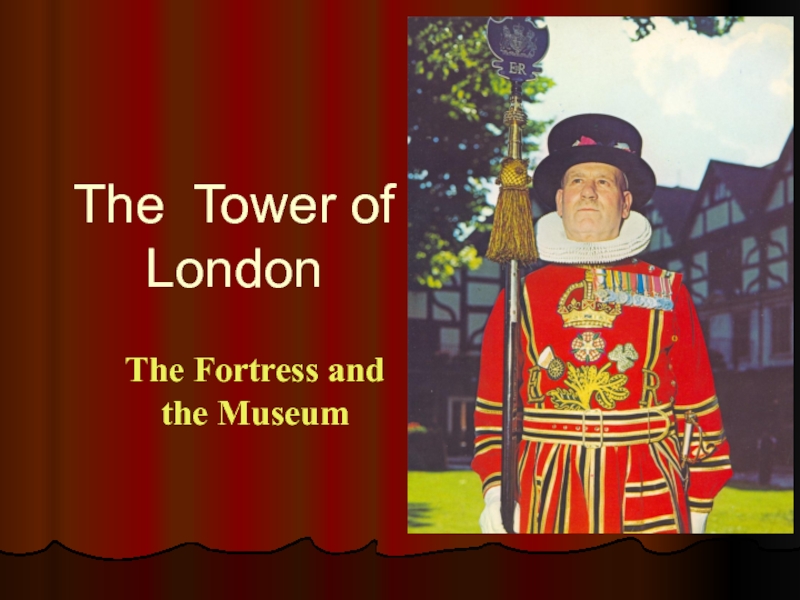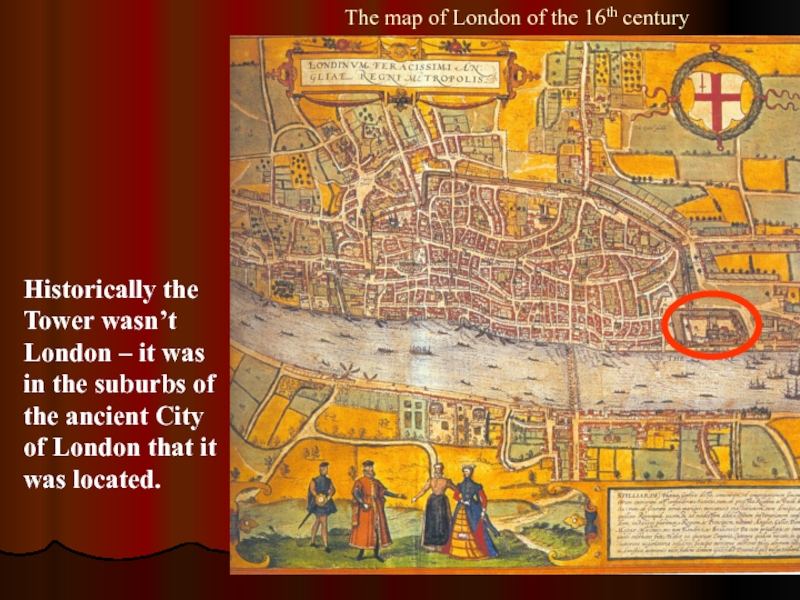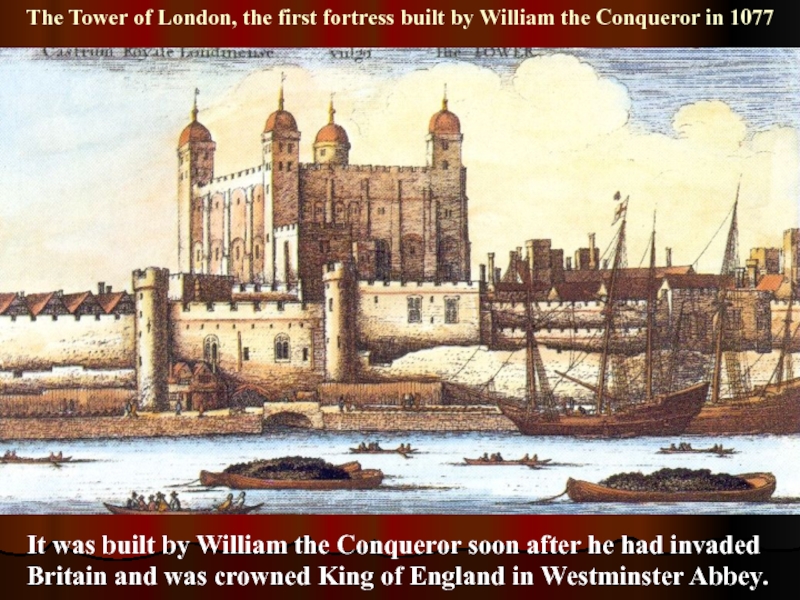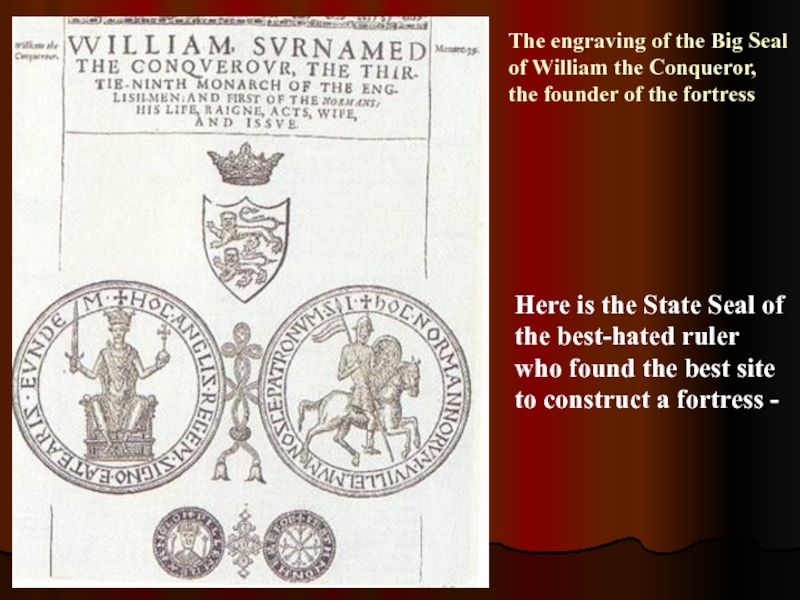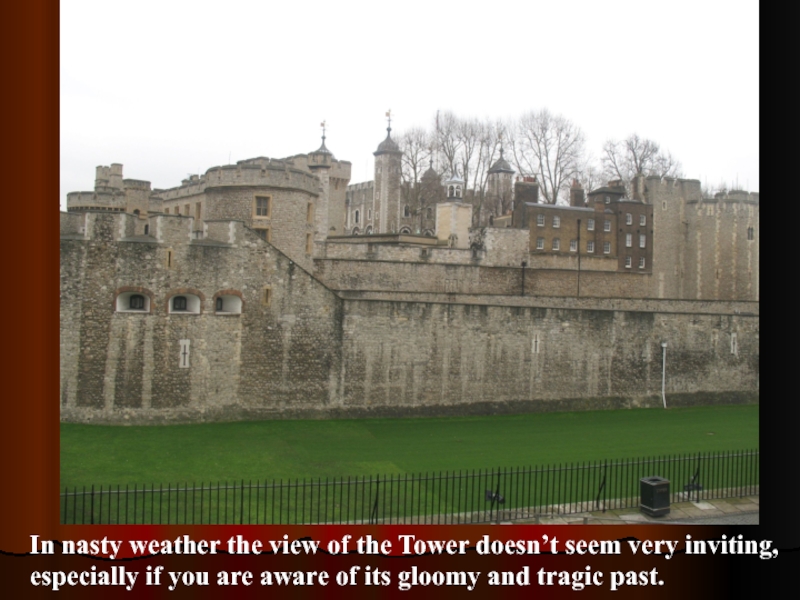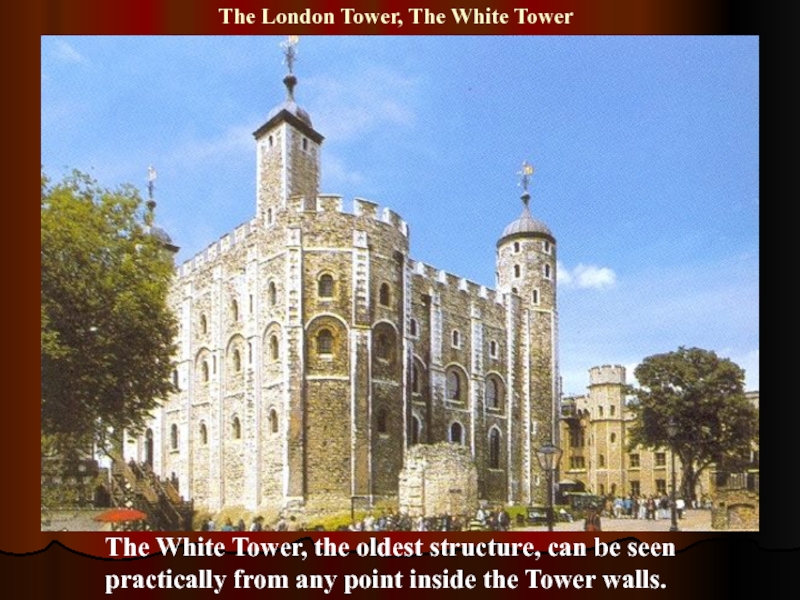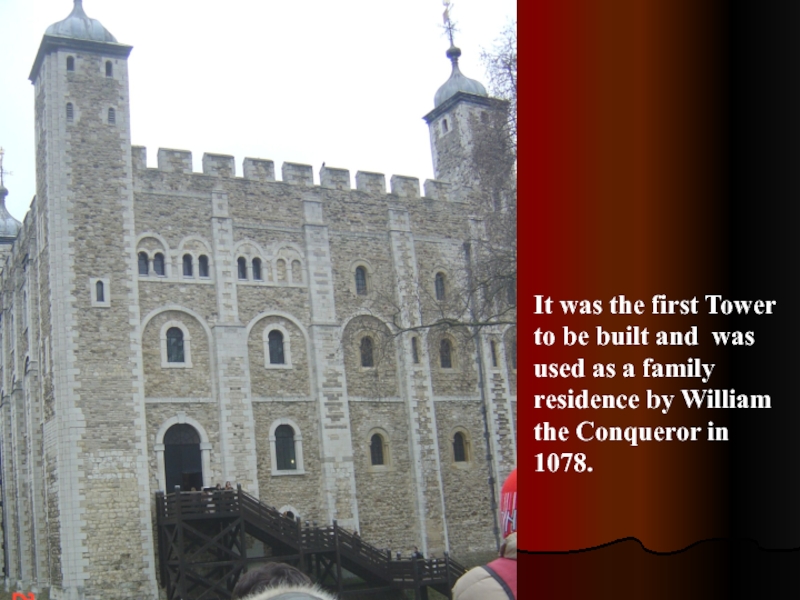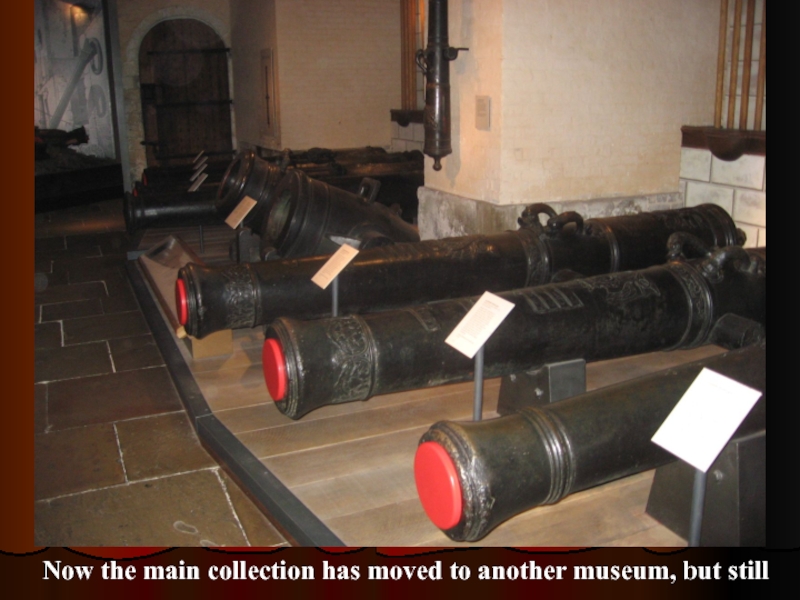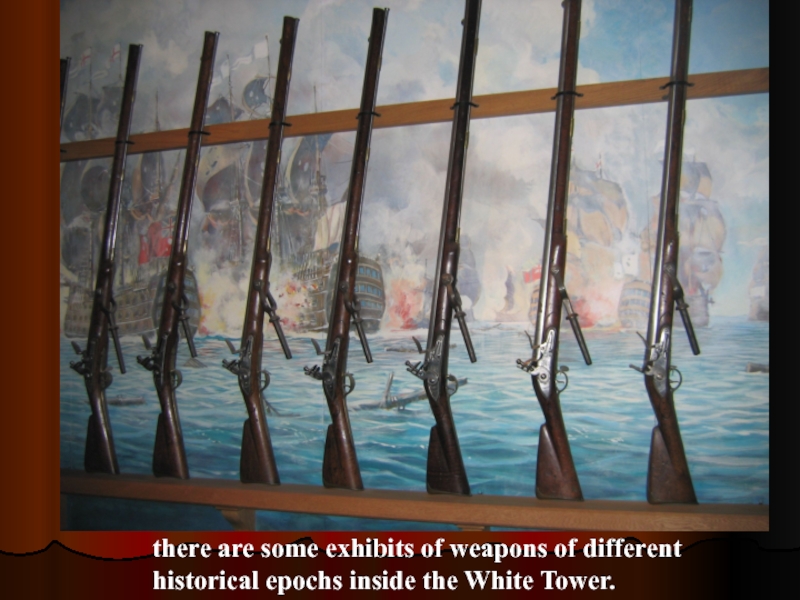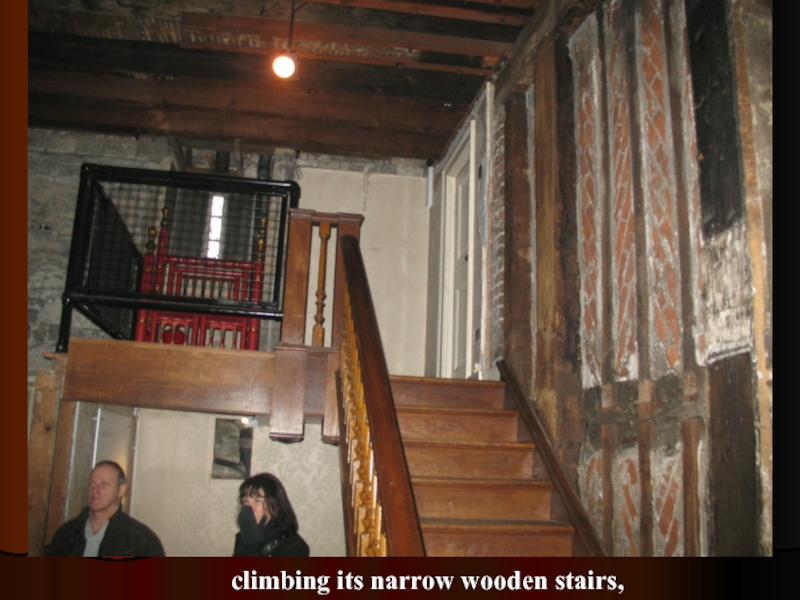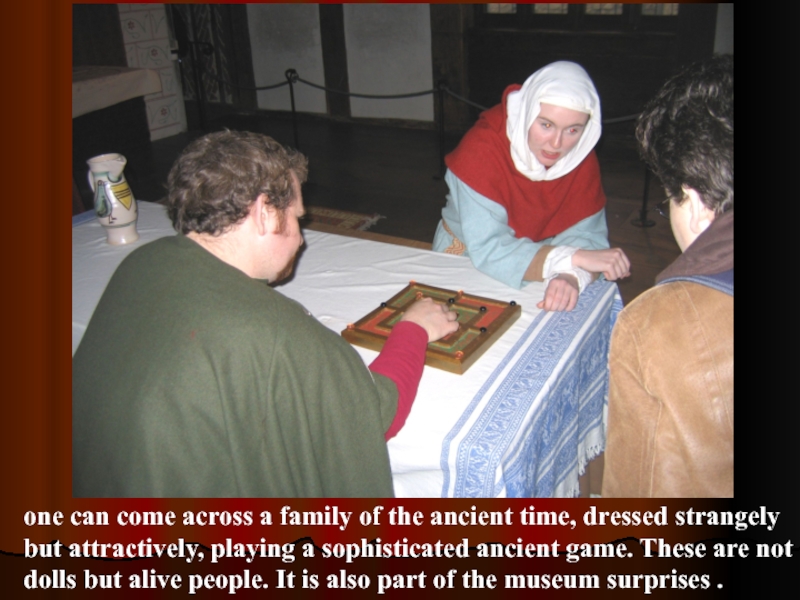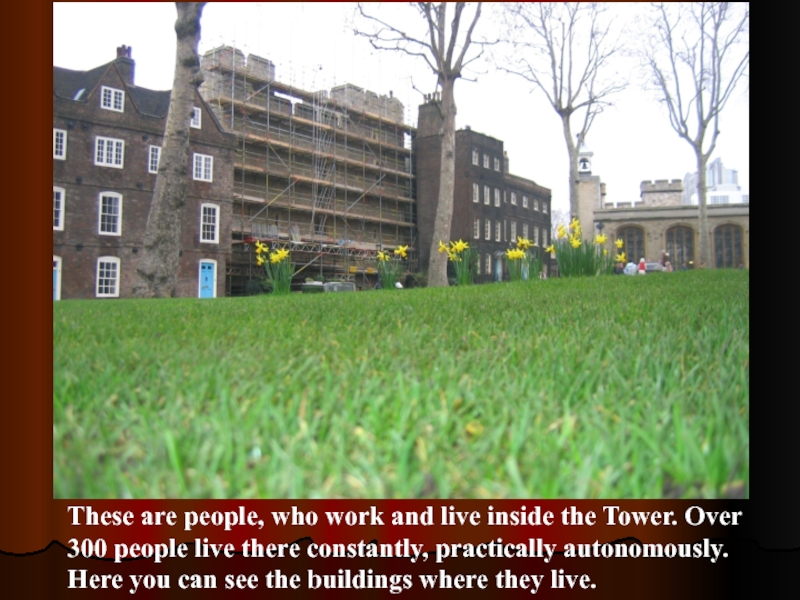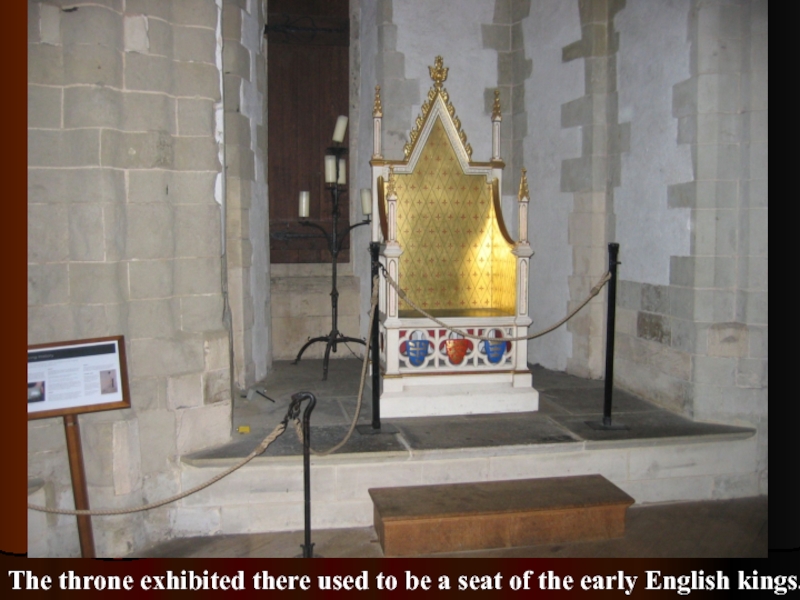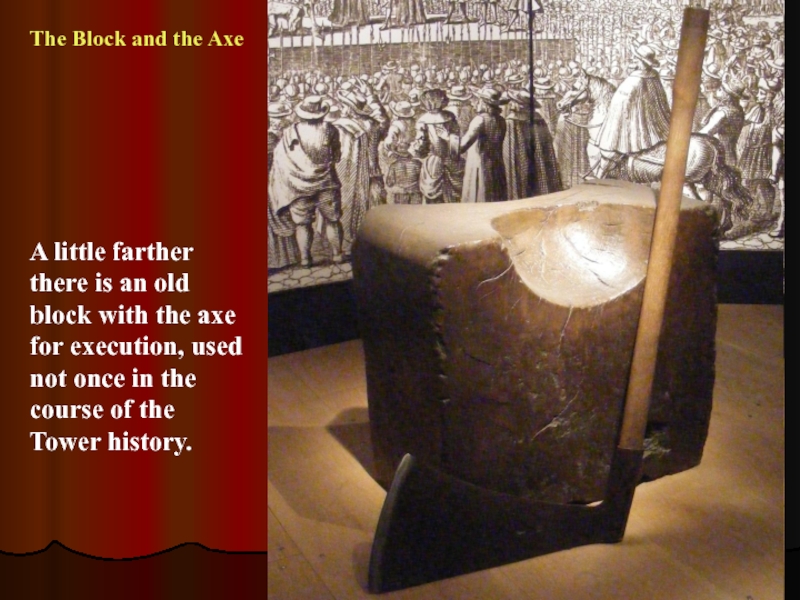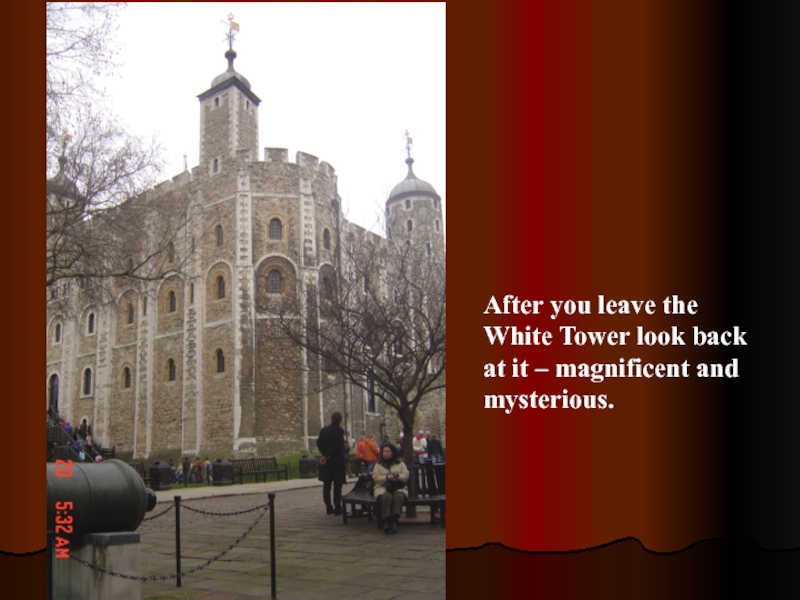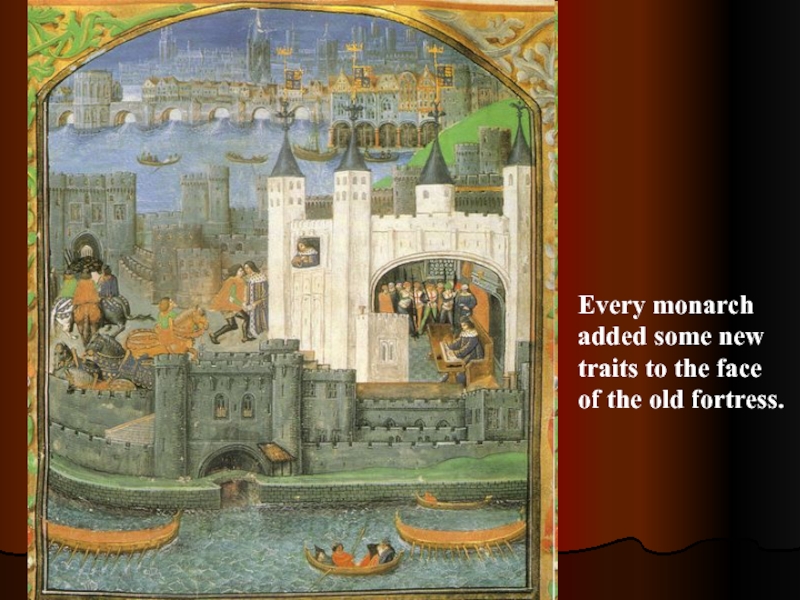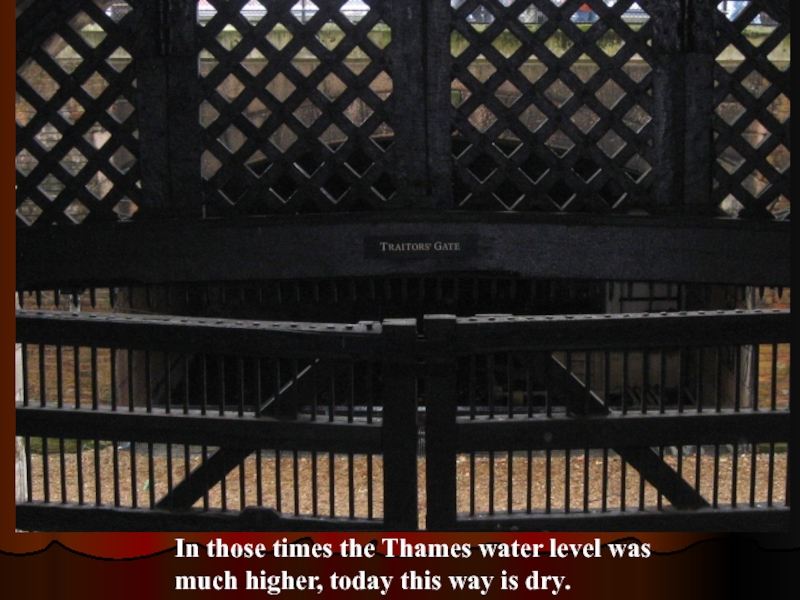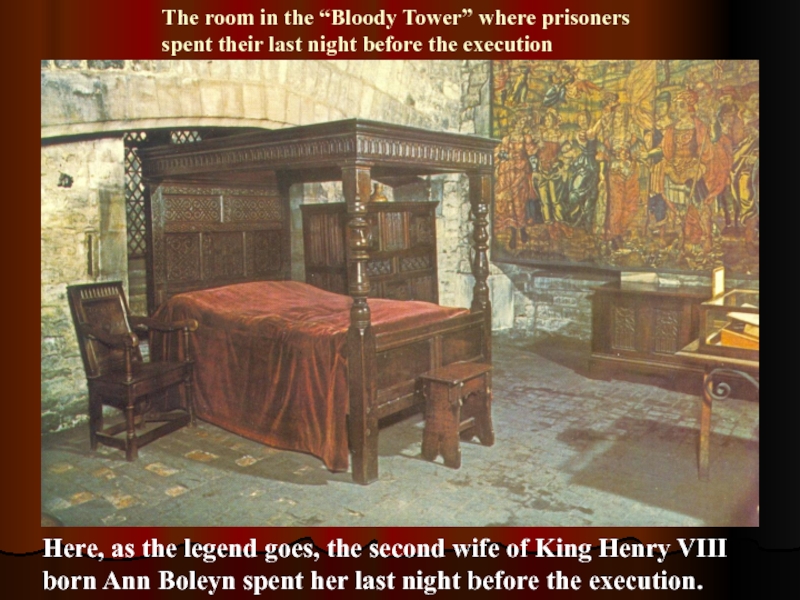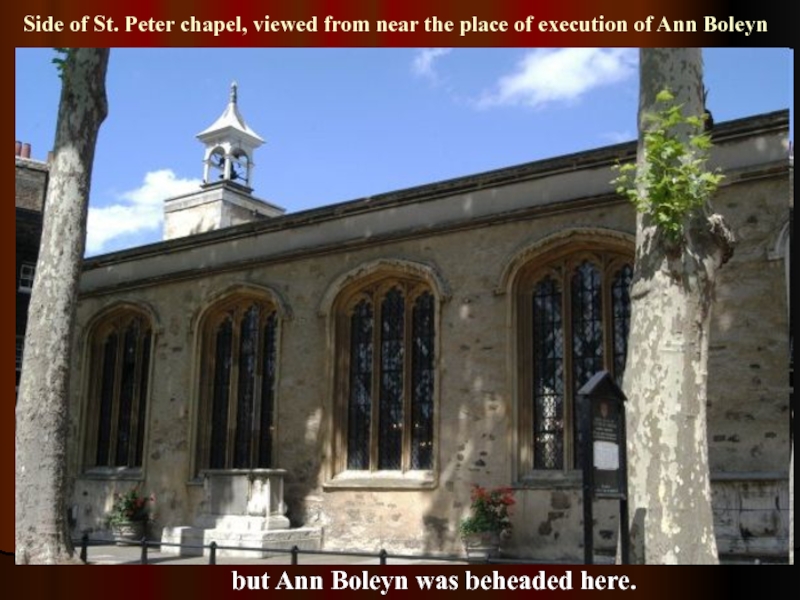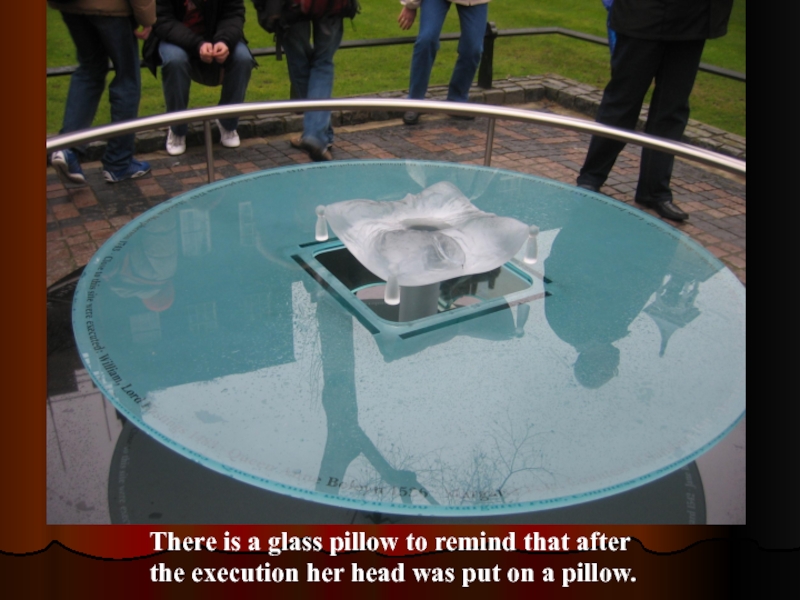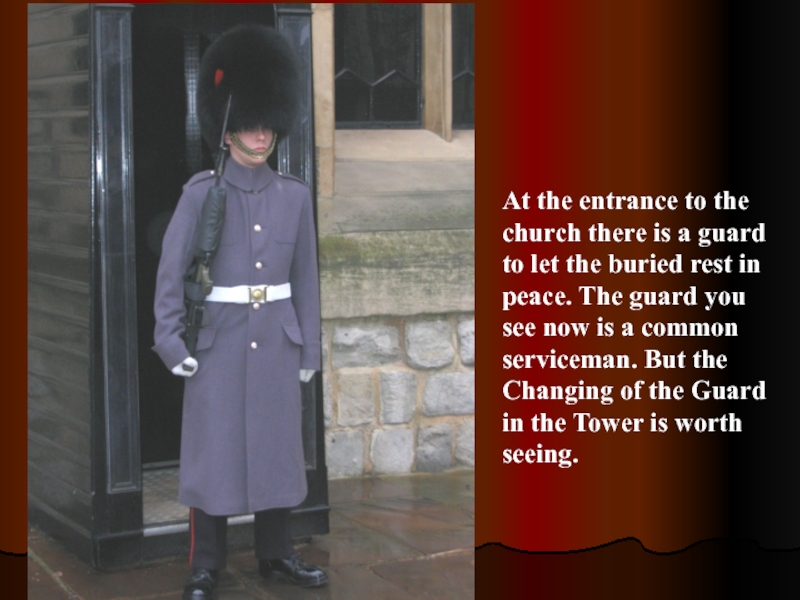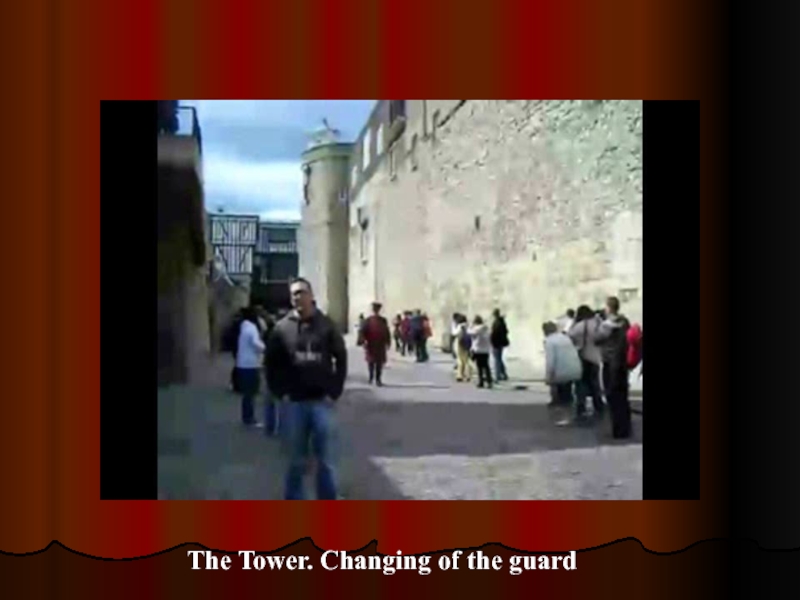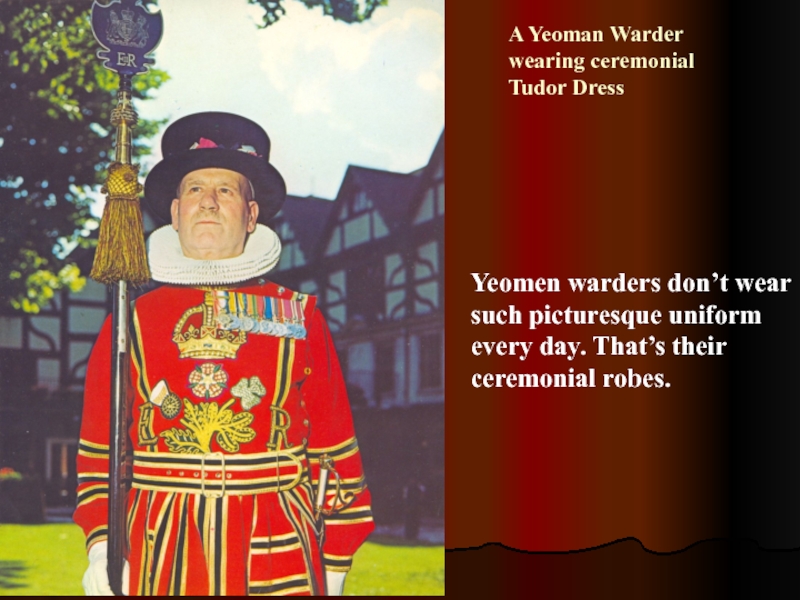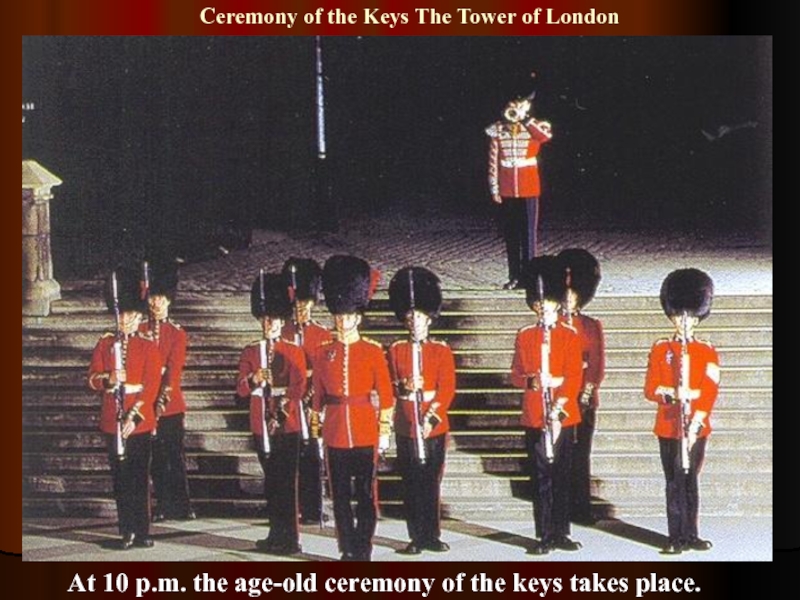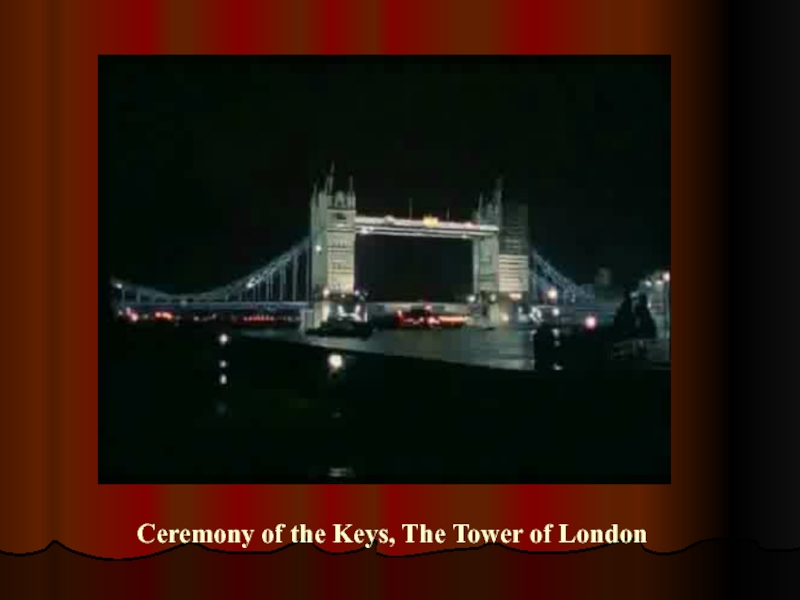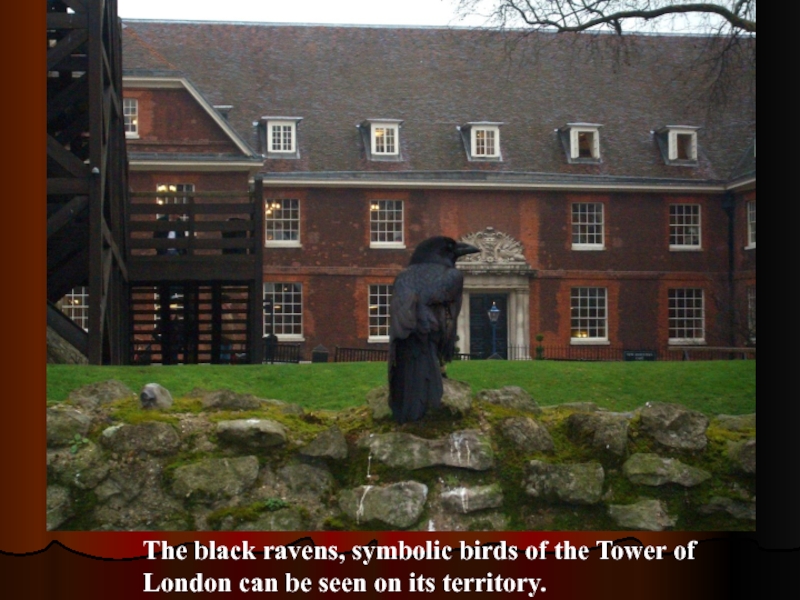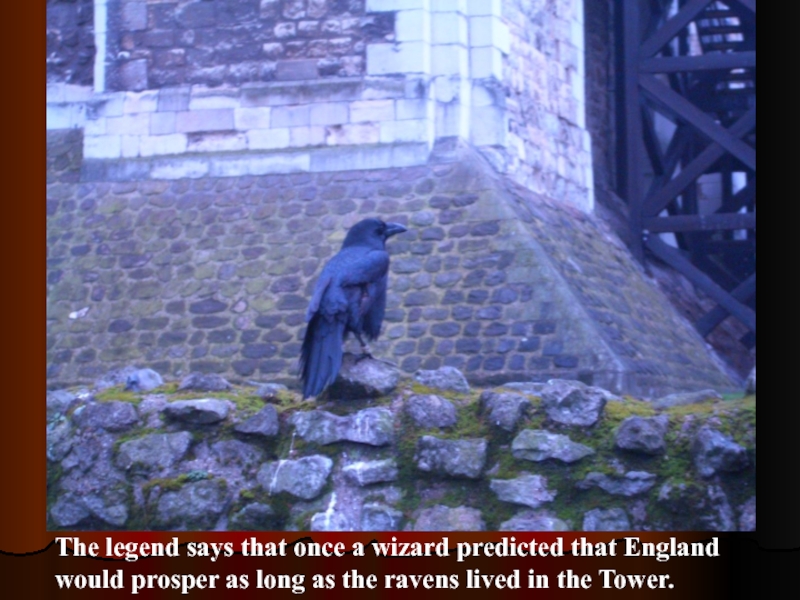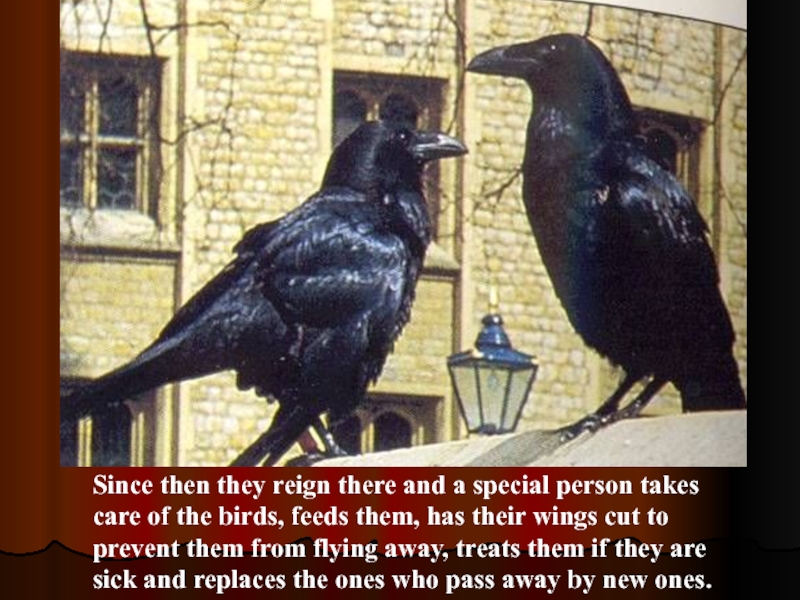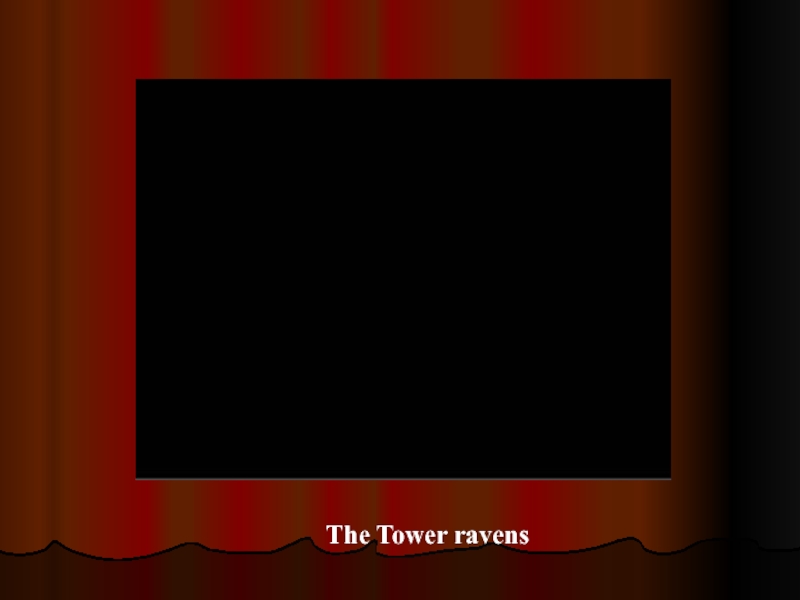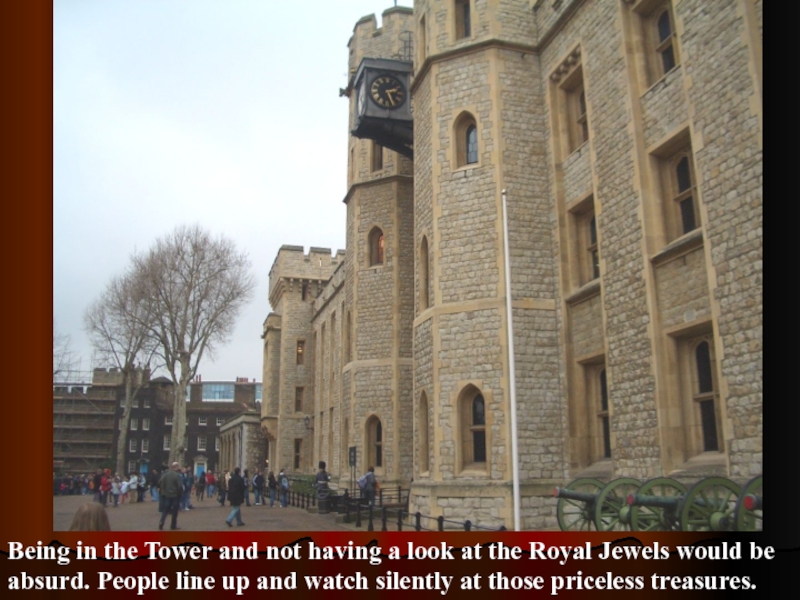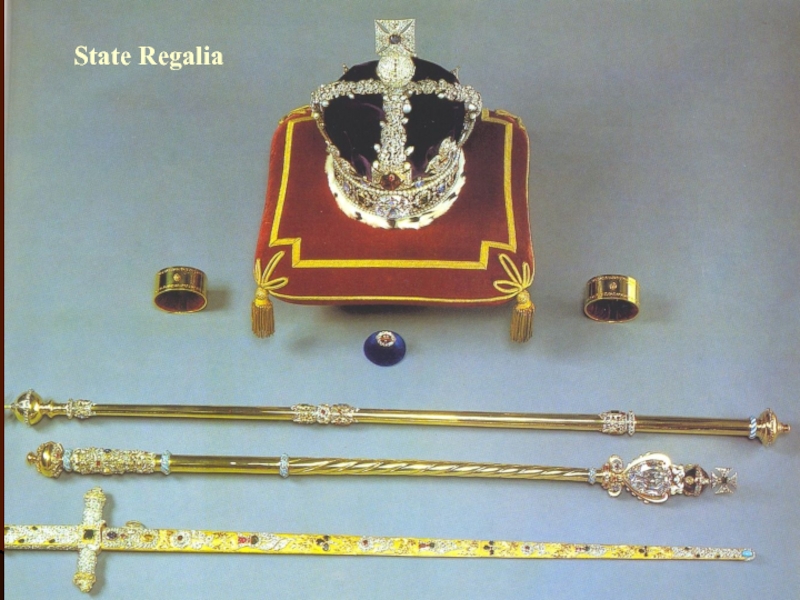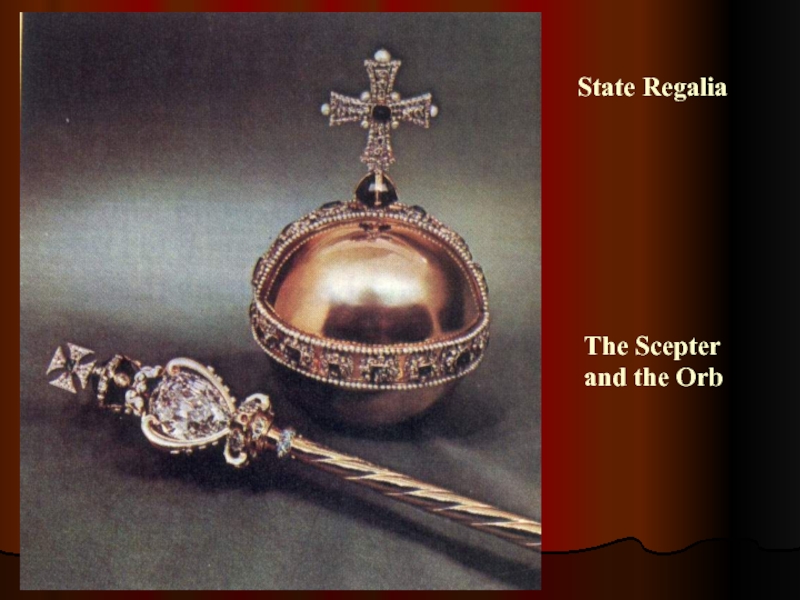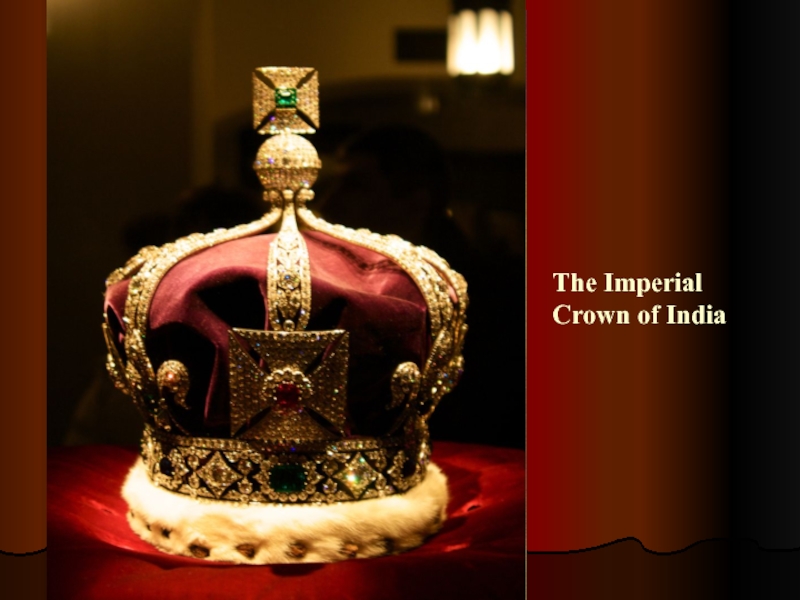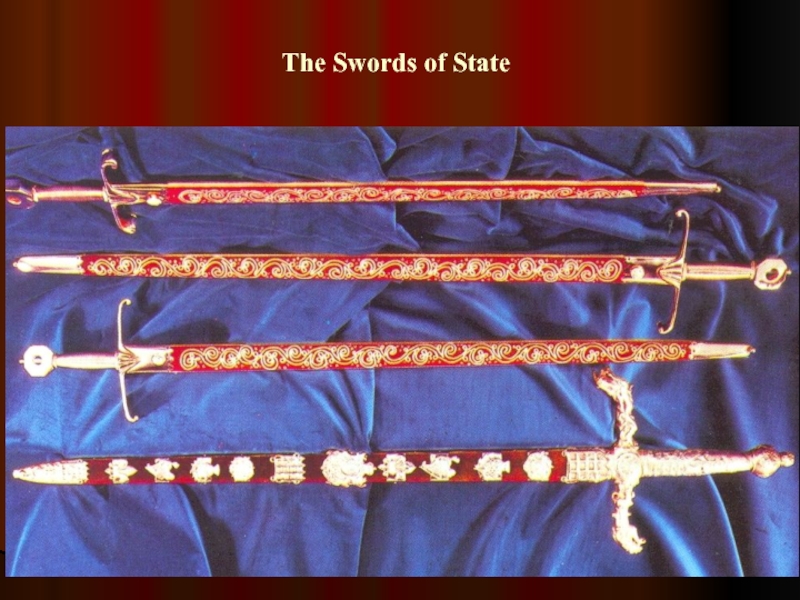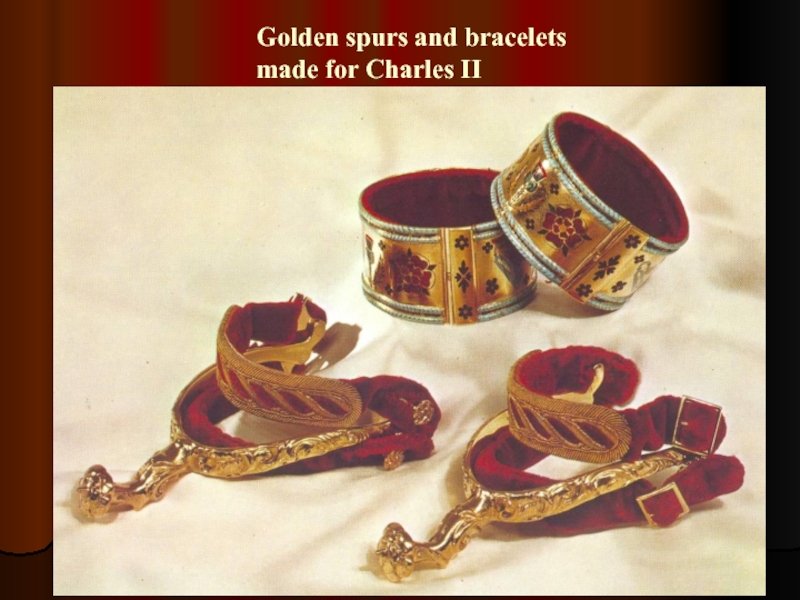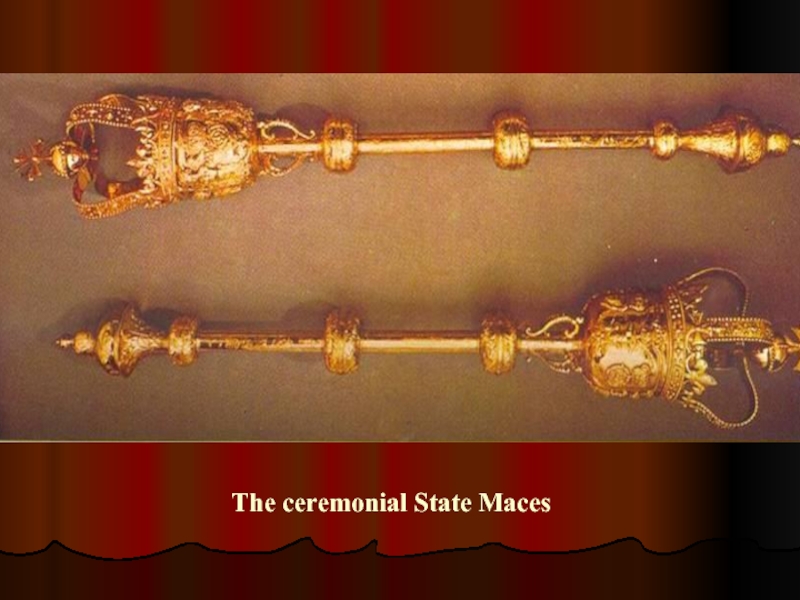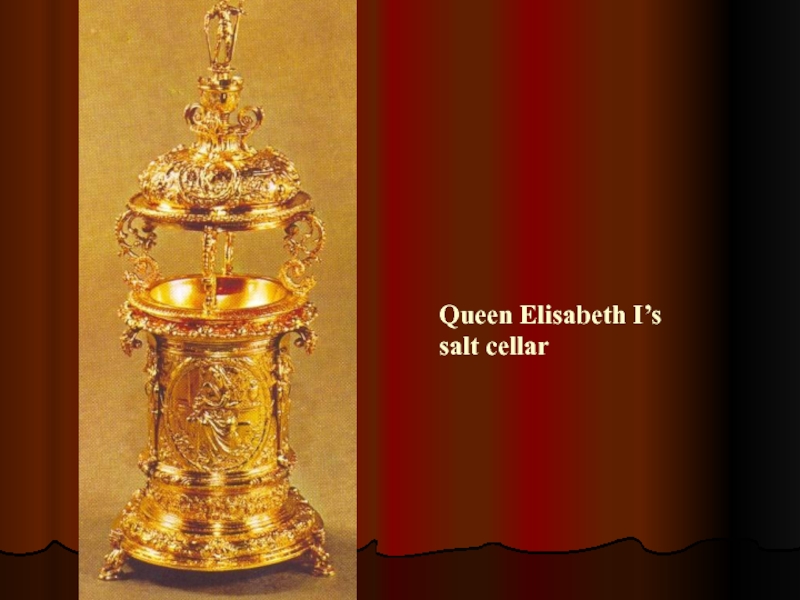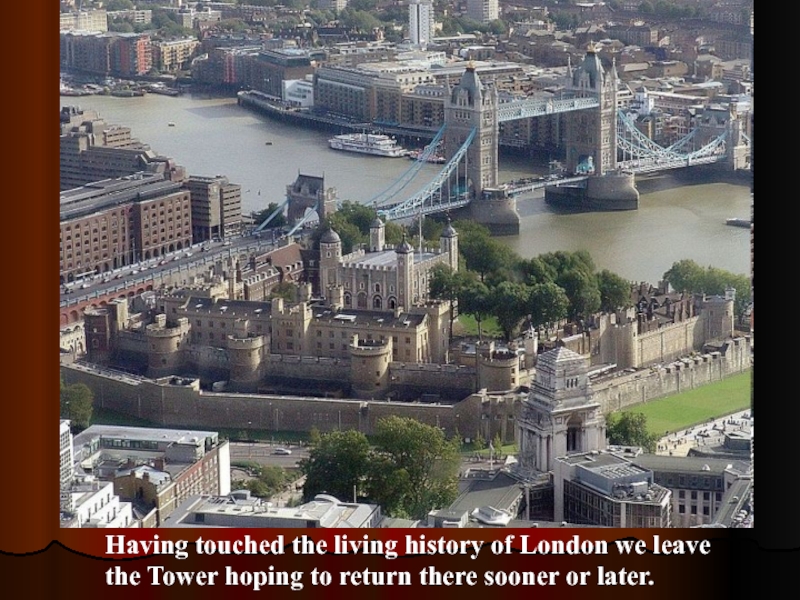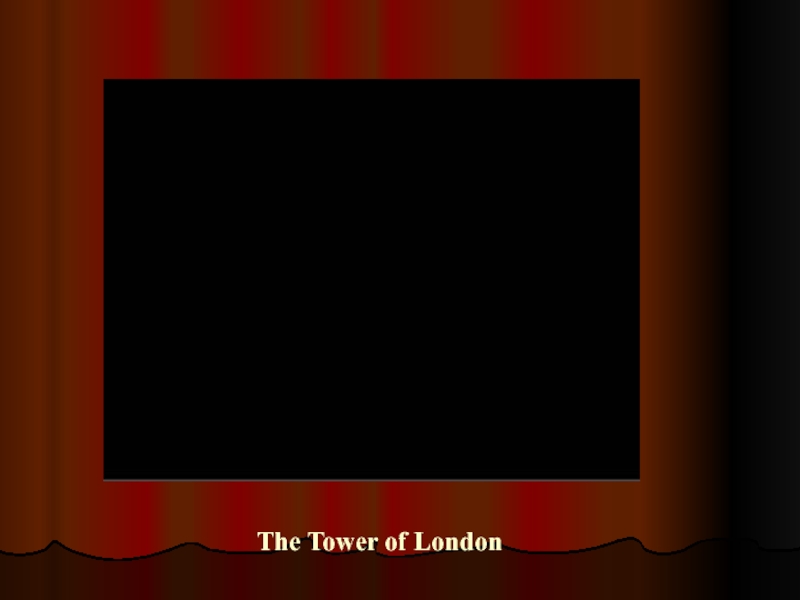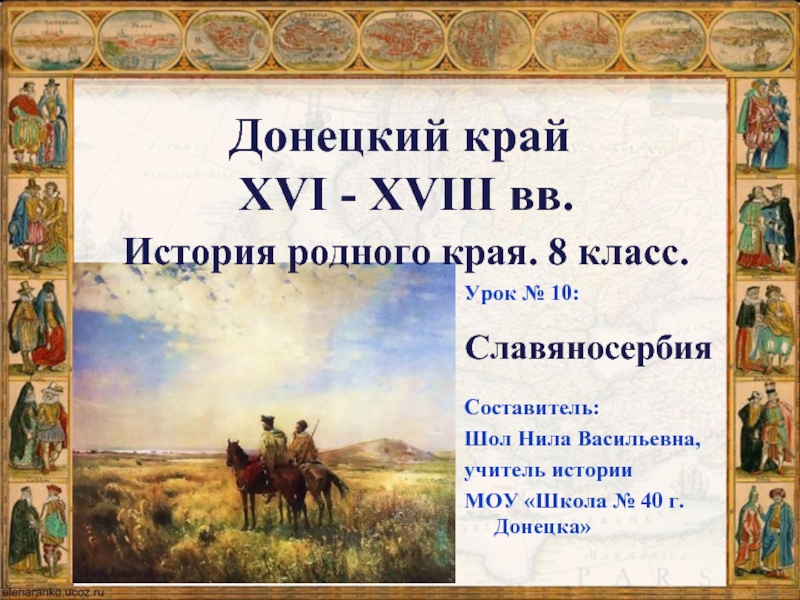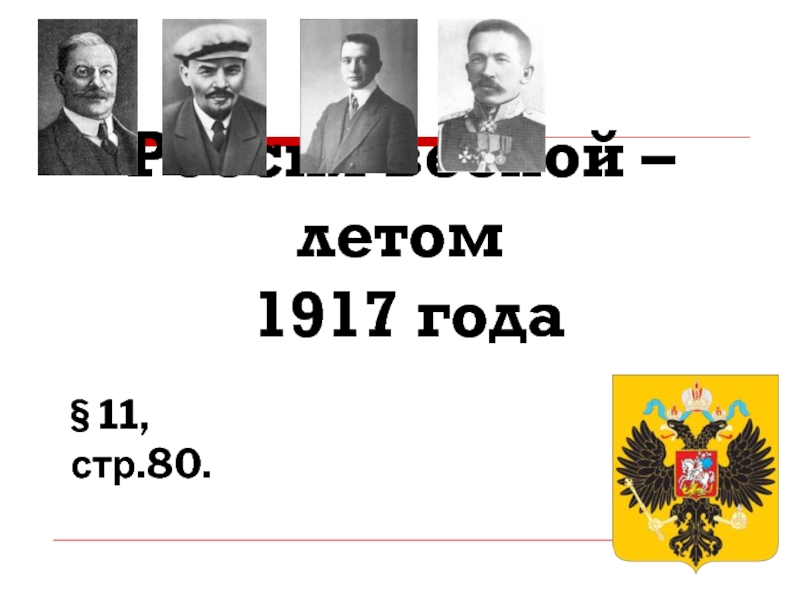- Главная
- Разное
- Дизайн
- Бизнес и предпринимательство
- Аналитика
- Образование
- Развлечения
- Красота и здоровье
- Финансы
- Государство
- Путешествия
- Спорт
- Недвижимость
- Армия
- Графика
- Культурология
- Еда и кулинария
- Лингвистика
- Английский язык
- Астрономия
- Алгебра
- Биология
- География
- Детские презентации
- Информатика
- История
- Литература
- Маркетинг
- Математика
- Медицина
- Менеджмент
- Музыка
- МХК
- Немецкий язык
- ОБЖ
- Обществознание
- Окружающий мир
- Педагогика
- Русский язык
- Технология
- Физика
- Философия
- Химия
- Шаблоны, картинки для презентаций
- Экология
- Экономика
- Юриспруденция
The Tower of London. The Fortress and the Museum презентация
Содержание
- 1. The Tower of London. The Fortress and the Museum
- 2. The Tower of London is one
- 3. The map of London of
- 4. Nowadays it doesn’t take you long to
- 5. The Aerial View of the Tower of
- 6. The Tower of London, the first fortress
- 7. Map of the Tower of London of
- 8. The engraving of the Big Seal of
- 9. The view of the Tower of London
- 10. In nasty weather the view of the
- 11. Middle Tower Gate Tourists came into the
- 12. When you purchase an entry ticket you
- 13. The London Tower, The White Tower The
- 14. It was the first Tower to be
- 15. The name of the White Tower dates
- 16. Since the very moment of its construction
- 17. There was enough weapon for an army of 150 000 men.
- 18. Now the main collection has moved to another museum, but still
- 19. there are some exhibits of weapons of different historical epochs inside the White Tower.
- 20. The Chapel of St. John Wandering along the halls of the White Tower,
- 21. climbing its narrow wooden stairs,
- 22. one can come across a family of
- 23. These are people, who work and live
- 24. The Throne Chamber Going farther through the
- 25. The throne exhibited there used to be a seat of the early English kings.
- 26. The Block and the Axe A little
- 27. After you leave the White Tower look back at it – magnificent and mysterious.
- 28. Sir John Everett Millais, 1878, The
- 29. The Tower of London Not always did the Tower look like it does today.
- 30. Every monarch added some new traits to the face of the old fortress.
- 31. The moat that used to surround the Tower has long gone,
- 32. but the old walls, narrow paths and
- 33. The Salt Tower like a magnet draw
- 34. Traitor’s Gate Once the way to the
- 35. In those times the Thames water level was much higher, today this way is dry.
- 36. The Bloody Tower The Bloody Tower once
- 37. The room in the “Bloody Tower” where
- 38. A perspective view of Tower Hill and
- 39. Side of St. Peter chapel, viewed from
- 40. The Chapel of St Peter ad Vincula
- 41. There is a glass pillow to remind
- 43. At the entrance to the church there
- 44. The Tower. Changing of the guard
- 45. Yeoman Warders (Beefeaters). Guards and Guides of
- 46. Tourists are warned that they shouldn’t be
- 47. A Yeoman Warder wearing ceremonial Tudor Dress
- 48. Ceremony of the Keys The Tower of
- 49. Ceremony of the Keys, The Tower of London
- 50. The Tower. Ceremony of the Keys After
- 51. The black ravens, symbolic birds of the
- 52. These birds are especially kept in the Tower and accurately looked after.
- 53. The legend says that once a wizard
- 54. Since then they reign there and a
- 55. The Tower ravens
- 56. The Tower took turns at being a
- 57. Being in the Tower and not having
- 58. The Tower Collection of Crown Jewels
- 59. State Regalia
- 60. State Regalia
- 61. State Regalia The Scepter and the Orb
- 62. Queen Elisabeth, the Queen Mother’s crown, containing the famous Koh-i-noor diamond (1937)
- 63. The Imperial State Crown, containing Stuart sapphire,
- 64. St. Edward’s Crown
- 65. The Imperial Crown of India
- 66. The Swords of State
- 67. Golden spurs and bracelets made for Charles II
- 68. The ceremonial State Maces
- 69. Queen Elisabeth I’s salt cellar
- 70. The Anointing Spoon and Ampulla
- 71. The Coronation Rings
- 72. Having touched the living history of London
- 73. The Tower of London
Слайд 2
The Tower of London is one of the most attractive sights
Слайд 3
The map of London of the 16th century
Historically the Tower wasn’t
Слайд 4Nowadays it doesn’t take you long to get there by the
Слайд 5The Aerial View of the Tower of London
The history of the
Слайд 6The Tower of London, the first fortress built by William the
It was built by William the Conqueror soon after he had invaded Britain and was crowned King of England in Westminster Abbey.
Слайд 7Map of the Tower of London of the 11th century
The Tower
Слайд 8The engraving of the Big Seal of William the Conqueror, the
Here is the State Seal of the best-hated ruler who found the best site to construct a fortress -
Слайд 9The view of the Tower of London from the Tower Hill
a
Слайд 10In nasty weather the view of the Tower doesn’t seem very
Слайд 11Middle Tower Gate
Tourists came into the fortress through Middle Tower Gate
Слайд 12When you purchase an entry ticket you are usually provided with
The Tower Map
Слайд 13The London Tower, The White Tower
The White Tower, the oldest structure,
Слайд 14It was the first Tower to be built and was used
Слайд 15The name of the White Tower dates back to the times
Слайд 22one can come across a family of the ancient time, dressed
Слайд 23These are people, who work and live inside the Tower. Over
Слайд 24The Throne Chamber
Going farther through the suits of the White Tower
Слайд 26The Block and the Axe
A little farther there is an old
Слайд 28Sir John Everett Millais, 1878,
The Two Princes Edward and Richard
They say, in the 15th century two Royal Princes were murdered in their childhood and were secretly buried in the basement of the Tower.
Слайд 32but the old walls, narrow paths and stairs, impressive towers and
Слайд 33The Salt Tower
like a magnet draw tourists to stroll along the
Слайд 34Traitor’s Gate
Once the way to the Tower by boat was called
Слайд 36The Bloody Tower
The Bloody Tower once served a prison for Sir
Слайд 37The room in the “Bloody Tower” where prisoners spent their last
Here, as the legend goes, the second wife of King Henry VIII born Ann Boleyn spent her last night before the execution.
Слайд 38A perspective view of Tower Hill and the place of execution
Usually the executions were held on top the Tower Hill, outside the Tower,
Слайд 39Side of St. Peter chapel, viewed from near the place of
but Ann Boleyn was beheaded here.
Слайд 40The Chapel of St Peter ad Vincula (St Peter in Chains)
Ann Boleyn's remains are directly beneath this seal on the altar floor
This is the view of a small chapel, the parish church of the Tower of London. It is situated within the Tower's Inner Ward and dates from 1520. That’s where Queen Anne Boleyn was buried quite near the scaffold site where she was executed.
Слайд 43At the entrance to the church there is a guard to
Слайд 45Yeoman Warders (Beefeaters). Guards and Guides of the Tower of London.
Besides these guards one meets in the Tower of London the famous Yeoman Warders – guards and guides of the Tower.
